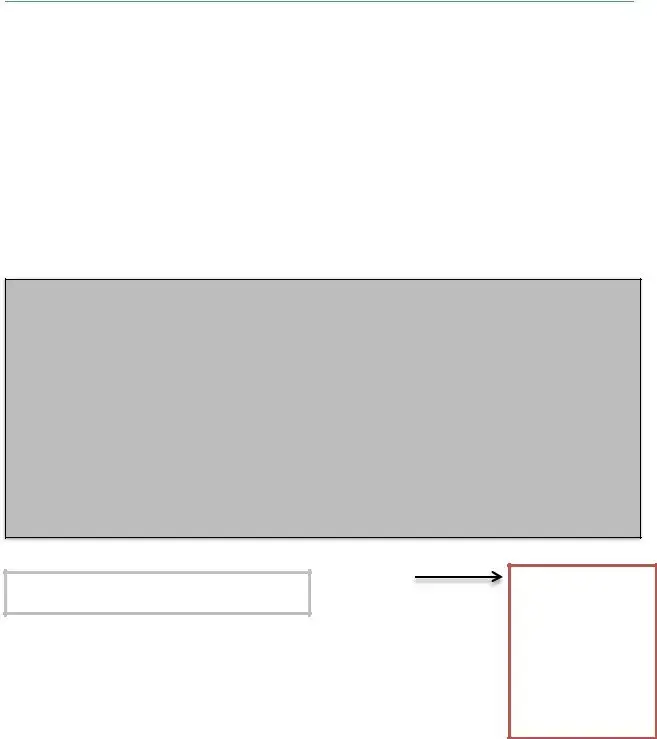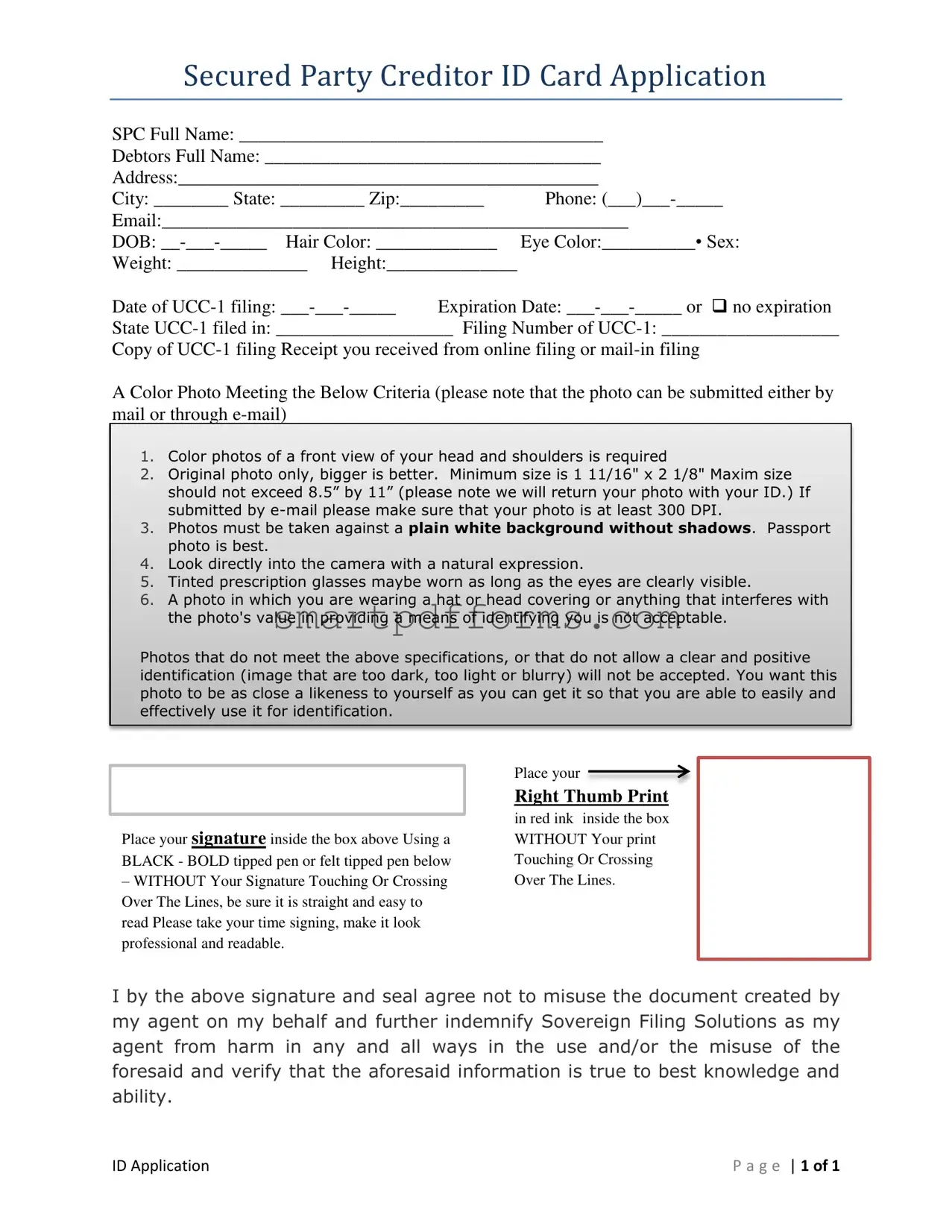
Secured Party Creditor ID Card Application
SPC Full Name: _______________________________________
Debtors Full Name: ____________________________________
Address:_____________________________________________
|
|
|
City: ________ State: _________ Zip:_________ |
Phone: (___)___-_____ |
Email:__________________________________________________ |
DOB: __-___-_____ Hair Color: _____________ |
Eye Color:__________• Sex: |
Weight: ______________ Height:______________ |
|
Date of UCC-1 filing: ___-___-_____ |
Expiration Date: ___-___-_____ or no expiration |
State UCC-1 filed in: ___________________ Filing Number of UCC-1: ___________________
Copy of UCC-1 filing Receipt you received from online filing or mail-in filing
A Color Photo Meeting the Below Criteria (please note that the photo can be submitted either by mail or through e-mail)
1.Color photos of a front view of your head and shoulders is required
2.Original photo only, bigger is better. Minimum size is 1 11/16" x 2 1/8" Maxim size should not exceed 8.5” by 11” (please note we will return your photo with your ID.) If submitted by e-mail please make sure that your photo is at least 300 DPI.
3.Photos must be taken against a plain white background without shadows. Passport photo is best.
4.Look directly into the camera with a natural expression.
5.Tinted prescription glasses maybe worn as long as the eyes are clearly visible.
6.A photo in which you are wearing a hat or head covering or anything that interferes with the photo's value in providing a means of identifying you is not acceptable.
Photos that do not meet the above specifications, or that do not allow a clear and positive identification (image that are too dark, too light or blurry) will not be accepted. You want this photo to be as close a likeness to yourself as you can get it so that you are able to easily and effectively use it for identification.
Place your signature inside the box above Using a BLACK - BOLD tipped pen or felt tipped pen below
–WITHOUT Your Signature Touching Or Crossing Over The Lines, be sure it is straight and easy to read Please take your time signing, make it look professional and readable.
Place your
Right Thumb Print
in red ink inside the box WITHOUT Your print Touching Or Crossing Over The Lines.
I by the above signature and seal agree not to misuse the document created by my agent on my behalf and further indemnify Sovereign Filing Solutions as my agent from harm in any and all ways in the use and/or the misuse of the foresaid and verify that the aforesaid information is true to best knowledge and ability.
ID Application |
P a g e | 1 OF 1 |

